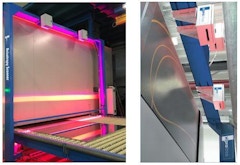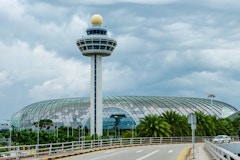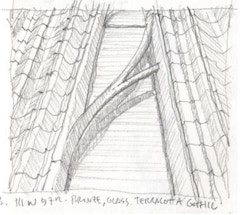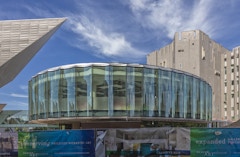
Imagining Future Innovative Facades
This workshop will focus on innovations in facade systems, particularly addressing materials, technologies, and innovative design methods.

This workshop will focus on innovations in facade systems, particularly addressing materials, technologies, and innovative design methods.

The use of bidirectional scattering distribution function incorporated in a transient systems simulation program, allows engineers to accurately

The prominence of climatically responsive building facades through the use of kinetics has proliferated in recent years due to a concern for the

Aesthetic and technical capabilities of facade design have become seemingly endless as building technologies progress. While the capacity to address

Architectural preferences for commercial building continue towards increased transparency resulting in large lites of glass with minimal visual

Architects and facade planners require that anisotropies or haze, optical phenomena disturbing the clear appearance of a glass, have to be avoided

Driven by an increasing demand for high thermal and acoustic performance, transparency, and low maintenance costs, a number of facade innovations

This paper will address the potential of ornamental architectural terracotta surfaces to mitigate the effects of climate fluctuations that will

The project described in this paper explores the integration of custom-made soft robotic muscles into a component-based surface. This project is part

Computer simulations of an automated dynamic facade in a passively heated and cooled building by using predictive modeling of short-term future

This paper outlines the successful implementation of digital workflows between the design team composed of Architect, Structural Engineer and Project

The conventional modern facade is essentially flat, which creates the tendency toward visual monotony and problems for modulating daylight—both on

3.5 billion years ago, cyanobacteria created the foundation for life on Earth by producing the oxygen basis for our atmosphere. Should we once again

Providing a unique and integral cladding/envelope solution suited for high-rise buildings has been an inherent challenge for this building typology

Facades play an integral role in defining the experience of modern life. As rising populations gravitate from rural to urban communities, they bring

In the very earliest stages of a design, an architect imagines a unique glazed facade form and wonders, “Is this possible?” and “What will it cost?”

The FTI Research Committee is requesting Research Concept Briefs describing a team and approach for evaluating industry needs and challenges surrounding four key topic areas in which FTI has identified a need to accelerate innovation. The proposed research will clearly identify knowledge gaps and ba


